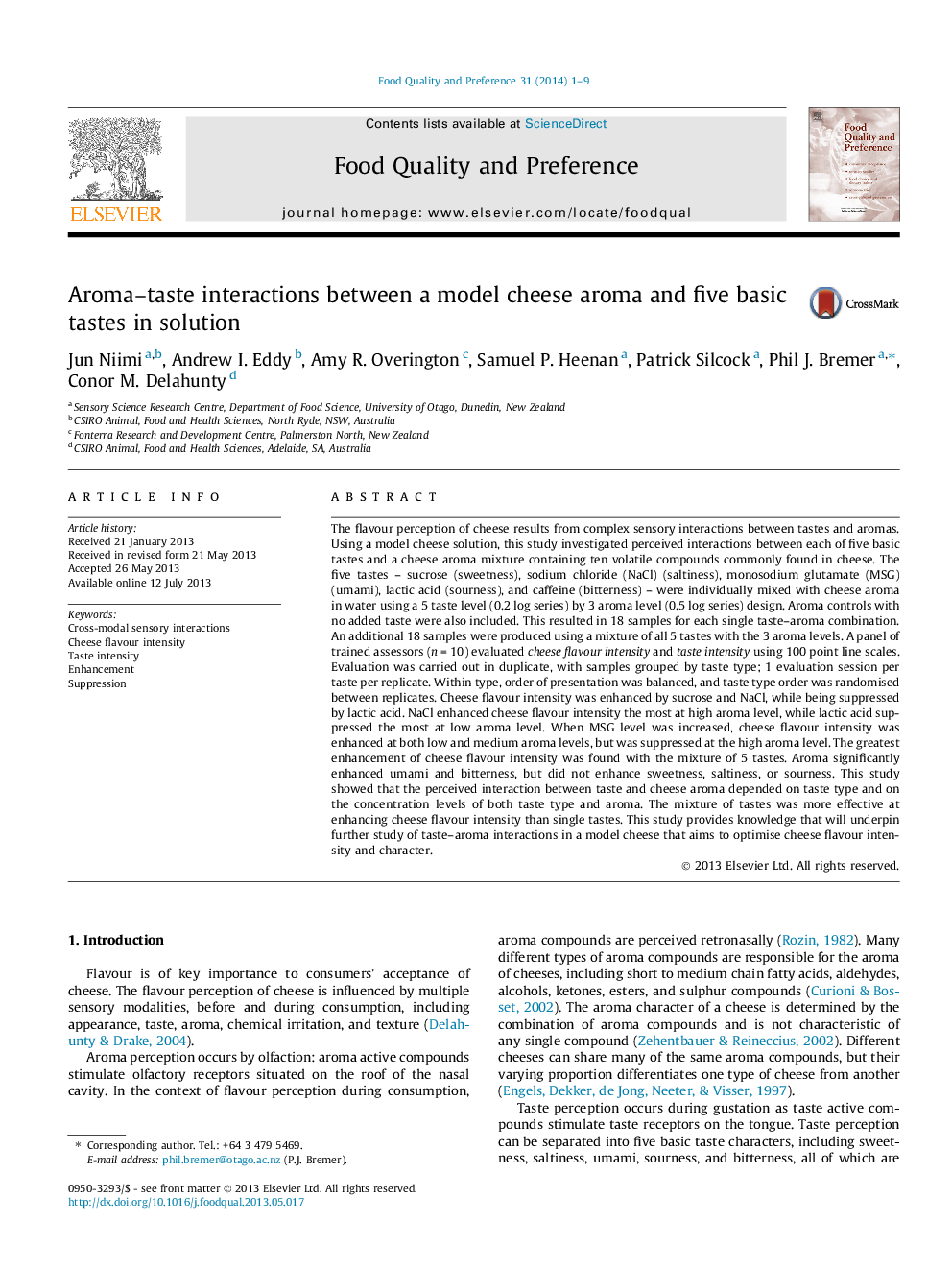| Article ID | Journal | Published Year | Pages | File Type |
|---|---|---|---|---|
| 4317295 | Food Quality and Preference | 2014 | 9 Pages |
•Increasing NaCl and sucrose individually, and mixture of tastes enhanced cheese flavour intensity.•Increasing lactic acid individually suppressed cheese flavour intensity.•Mixture of five tastes enhanced cheese flavour intensity more than single tastes.
The flavour perception of cheese results from complex sensory interactions between tastes and aromas. Using a model cheese solution, this study investigated perceived interactions between each of five basic tastes and a cheese aroma mixture containing ten volatile compounds commonly found in cheese. The five tastes – sucrose (sweetness), sodium chloride (NaCl) (saltiness), monosodium glutamate (MSG) (umami), lactic acid (sourness), and caffeine (bitterness) – were individually mixed with cheese aroma in water using a 5 taste level (0.2 log series) by 3 aroma level (0.5 log series) design. Aroma controls with no added taste were also included. This resulted in 18 samples for each single taste–aroma combination. An additional 18 samples were produced using a mixture of all 5 tastes with the 3 aroma levels. A panel of trained assessors (n = 10) evaluated cheese flavour intensity and taste intensity using 100 point line scales. Evaluation was carried out in duplicate, with samples grouped by taste type; 1 evaluation session per taste per replicate. Within type, order of presentation was balanced, and taste type order was randomised between replicates. Cheese flavour intensity was enhanced by sucrose and NaCl, while being suppressed by lactic acid. NaCl enhanced cheese flavour intensity the most at high aroma level, while lactic acid suppressed the most at low aroma level. When MSG level was increased, cheese flavour intensity was enhanced at both low and medium aroma levels, but was suppressed at the high aroma level. The greatest enhancement of cheese flavour intensity was found with the mixture of 5 tastes. Aroma significantly enhanced umami and bitterness, but did not enhance sweetness, saltiness, or sourness. This study showed that the perceived interaction between taste and cheese aroma depended on taste type and on the concentration levels of both taste type and aroma. The mixture of tastes was more effective at enhancing cheese flavour intensity than single tastes. This study provides knowledge that will underpin further study of taste–aroma interactions in a model cheese that aims to optimise cheese flavour intensity and character.
